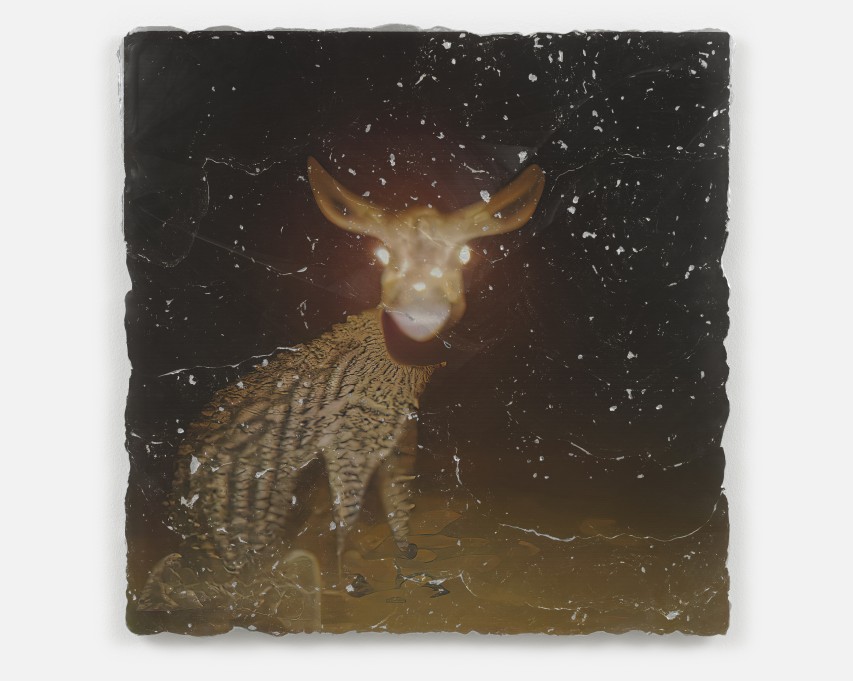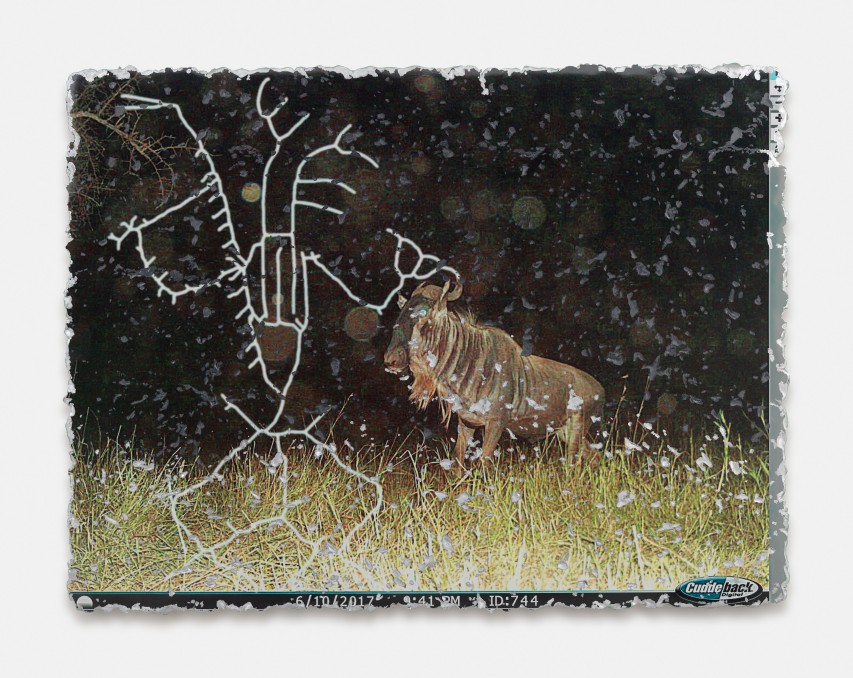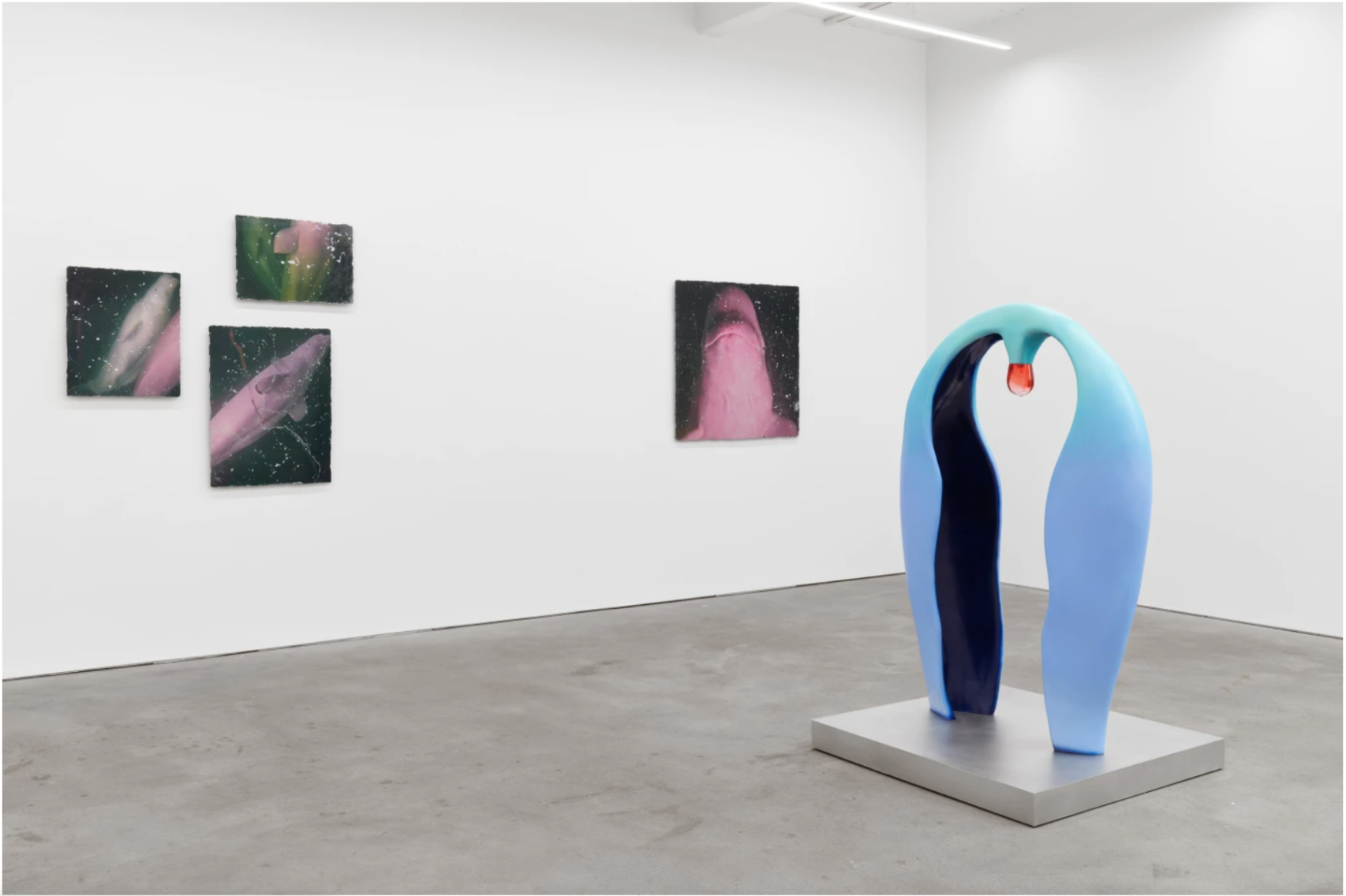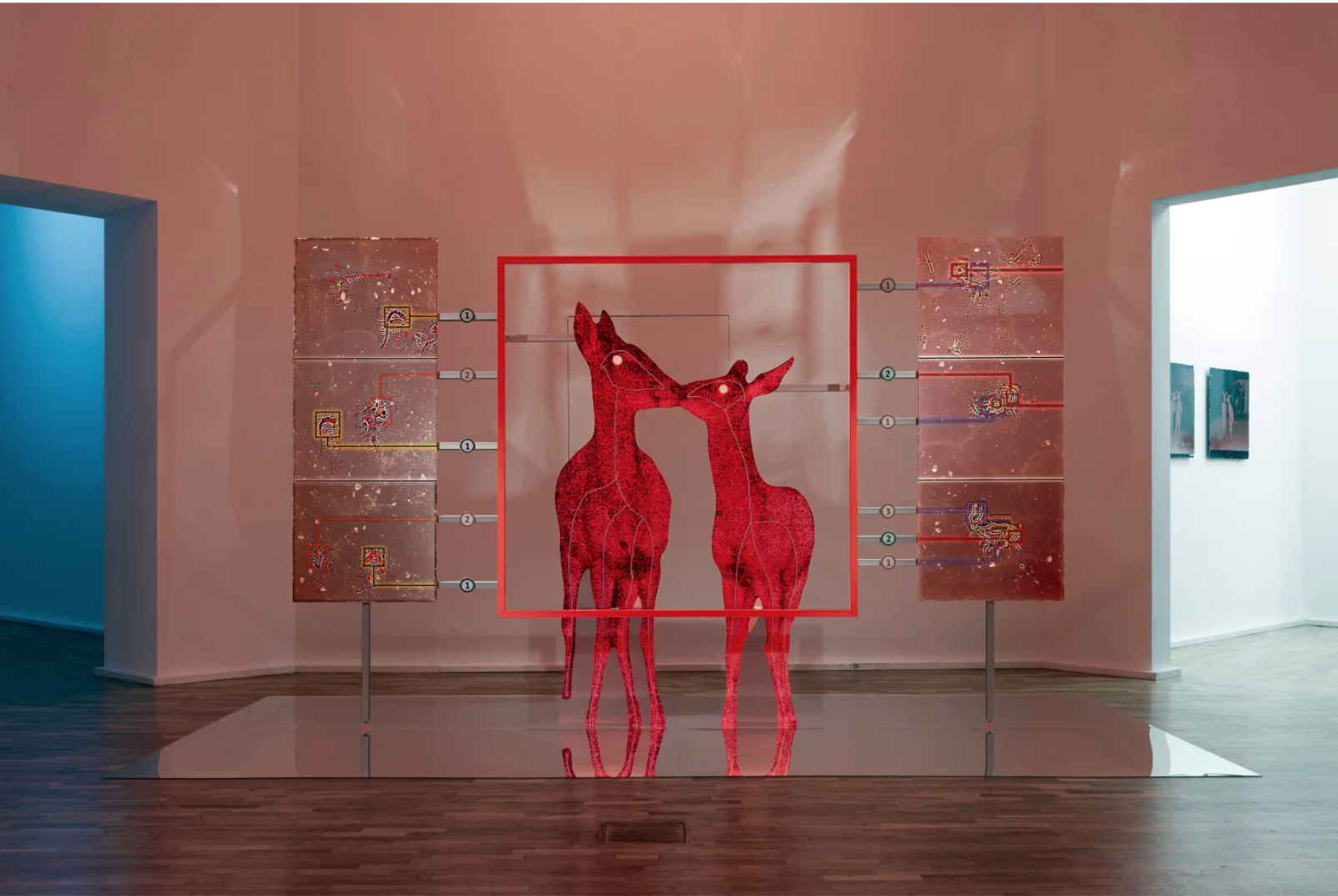-
Katja Novitskova

Novitskova’s work tackles the complexity and eventual failures of depicting the world through technologically driven narratives. By uniting art and science to the level of nature, Novitskova brings awareness to the mediation and representation tools used to depict these realms.
More specifically, Novitskova’s work focuses on the mapping of biological territories that are no longer outside but rather ‘inside’ biological bodies. The technological devices, such as microscopes or brain scans, used to mediate and depict those alternative geographies are able to merge datasets and biology, altering how biology and technology develop. In Novitskova’s mind ‘the look inside has somehow replaced the gaze into the future.’ From parasitic worms to robotic nurturing or incubating machines, technological devices are not only dominating the inner biological realm, but also the affective one. Novitskova’s adoption of the baby swigs as ready mades, turning them into sci-fi-like looking creatures, is a wink to new technologies of affection and care, mediated through algorithms and artificial intelligence. Those works bring up memories of the ‘alien’ depicted by science fiction, as well as the role of the non-human in a hypothetic not so distant future.

Earthware (Dreaming of Laurasiatheria), 2022, UV printer ink, epoxy clay, nail polish, 100 x 100 x 2.5 cm. Courtesy the artist & Kraupa-Tuskany Zeidler.

Earthware 06.13.2017, 2019, UV printer ink, epoxy clay, nail polish, 121 x 161 x 3 cm. Courtesy the artist & Kraupa-Tuskany Zeidler.

Exhibition view, Soft Approximations, Kraupa-Tuskany Zeidler, Berlin, 2022

Exhibition view, Eyes of the World, Museum für Gegenwartskunst Siegen, Germany, 2023.

Exhibition view, The Dreamers, Belgrade Biennal, 2021
Katja Novitskova, born 1984 in Tallinn, Estonia, lives and works in Amsterdam. She was artist in residence at the Rijksakademie van Beeldende Kunsten in Amsterdam from 2013 to 2014.
Her work has been exhibited internationally in solo and group exhibitions including Museum für Gegenwartskunst Siegen (2023, solo); Fries Museum, Leeuwarden (2023, solo); Stavanger Art Museum, Norway (2023); Marta Herford Museum, Herford (2022); Kraupa-Tuskany Zeidler (2022, solo); MUDAM Luxembourg (2021); Kunstfort bij Vijfhuizen (2021, solo); Belgrade Biennal (2021), Migros Museum für Gegenwartskunst, Zürich (2020); Sharjah Art Foundation (2020); Powerlong Museum, Shanghai (2019); Hamburger Bahnhof, Berlin (2019); the 14. Fellbach Trienniale (2019); CCA, Tel Aviv (2019); Marta Herford Museum, Herford (2018); Whitechapel Gallery, London (2018, solo); Kumu Art Museum, Tallinn (2018, solo), Baltic Triennial, Vilnius (2018) and others…





